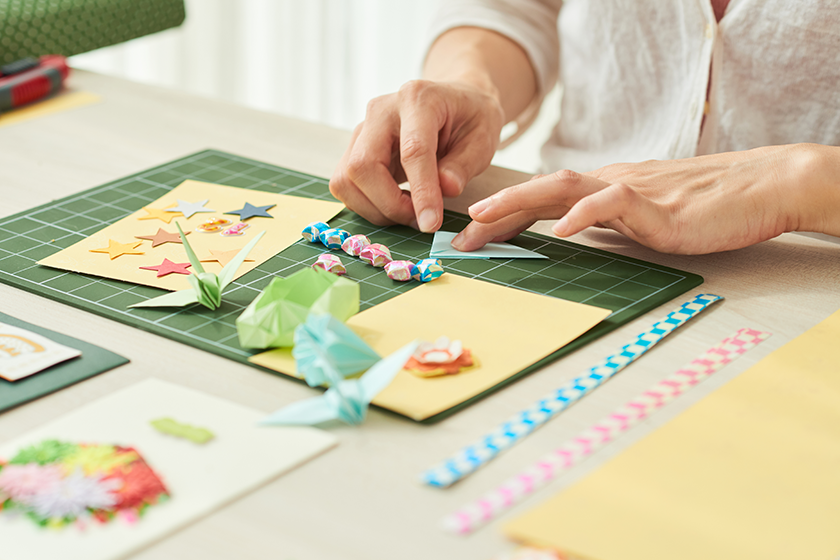Crafting is more than just a leisurely pastime; it’s a powerful tool for promoting seniors’ cognitive development. As individuals age, cognitive function naturally declines, making it imperative to participate in activities that stimulate the brain. Crafting acts as a creative outlet that not only provides enjoyment but also improves mental acuity and overall well-being.
The Connection Between Crafting and Seniors’ Cognitive Development
Participating in creative activities like crafting plays a big part in maintaining and improving seniors’ cognitive development. Crafting involves a number of cognitive processes, including problem-solving, memory recall and hand-eye coordination. These activities help keep the brain active, which is necessary in slowing down cognitive decline associated with aging.
Crafting requires concentration and attention to detail, which can help sharpen mental focus. For example, tasks like knitting, painting or assembling models demand a high level of precision and patience, encouraging residents to use their minds fully. This type of mental engagement is helpful for preserving memory and cognitive function, making crafting a perfect activity for golden agers who want to maintain their mental health.
Boosting Memory and Problem-Solving Skills
One of the biggest benefits of crafting for seniors’ cognitive development is the betterment of memory and problem-solving skills. When retirees participate in activities like quilting, pottery or scrapbooking, they are often required to follow patterns, remember sequences and make decisions on color and design.
These tasks stimulate the brain’s memory centers and encourage the retention of information.
What’s more, crafting often presents challenges that require problem-solving skills. Whether it’s figuring out how to fix a mistake in a knitting project or deciding on the best layout for a scrapbook page, these challenges keep the mind agile and promote critical thinking. By regularly participating in crafting, people can develop stronger problem-solving abilities, which are necessary for maintaining cognitive health as they age.
Social Interaction and Emotional Well-being
Crafting is not only beneficial for seniors’ cognitive development; it also offers social and emotional benefits. Participating in crafting activities and events brings opportunities for social interaction, which is good for emotional well-being. Retirees who are involved in group crafting sessions can share their creativity with others, encouraging a sense of community and belonging.
These social interactions help reduce feelings of isolation and loneliness, which are common among many retirement-age individuals. The positive emotional impact of crafting can also boost cognitive function, because a healthy emotional state is closely linked to mental sharpness. Crafting allows golden agers to express themselves creatively, which can be therapeutic and improve self-esteem, contributing to overall cognitive and emotional health.
Crafting as Part of a Complete Approach to Care
Including crafting in the daily routines of retirees is part of a broader approach to maintaining and increasing cognitive function. Many communities recognize the value of crafting and include it as part of their senior living amenities.
By providing a number of crafting activities and events, these communities provide residents with the tools they need to stay mentally and emotionally engaged. Crafting can be easily customized to fit the individual preferences and abilities of each person, making it an inclusive activity that everyone can enjoy.
Creative Living for Cognitive Health
At our Personal Care and Memory Care community in Sellersville, PA, we believe in the power of creativity to boost seniors’ cognitive development. With our personalized care and interesting activities, residents enjoy a fulfilling lifestyle that nurtures both mind and spirit.
Call us at 267-406-6161 or use our online form to reach out today.







